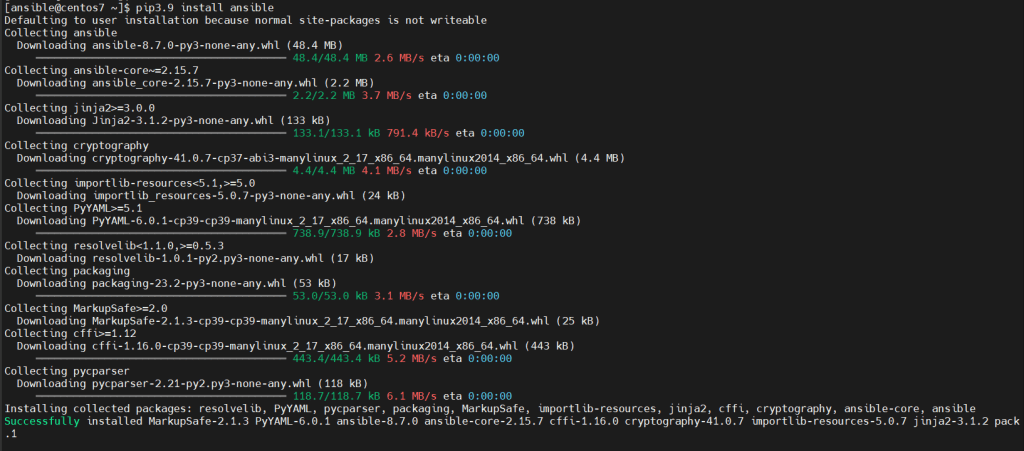First, we need to ensure that python3.9 and pip are available.

if not available, please read my install pyhon3.9 post below.
if so, pip is available proceed installation step but please note that do not install ansible on root user.
pip3.9 install ansible

![]()
Verifying ansible installation.
ansible --version

As you can see, the executable location is under the $HOME/.local/bin directory. You can add it to the PATH environment variable in the bash_profile.
Now, we can create configuration file.
sudo mkdir /etc/ansible sudo chown ansible:ansible /etc/ansible ansible-config init --disabled -t all > /etc/ansible/ansible.cfg
Let’s try a simple ansible playbook to test without creating inventory file. We will be using localhost.
create a test.yml file with below lines and save it.
- hosts: localhost
tasks:
- name: Get user name
shell: whoami
register: theuser
- name: Get host name
shell: hostname
register: thehost
- debug: msg="I am {{ theuser.stdout }} at {{ thehost.stdout }}"
Execute with following command.
ansible-playbook test.yml

Ok, that’s it!
